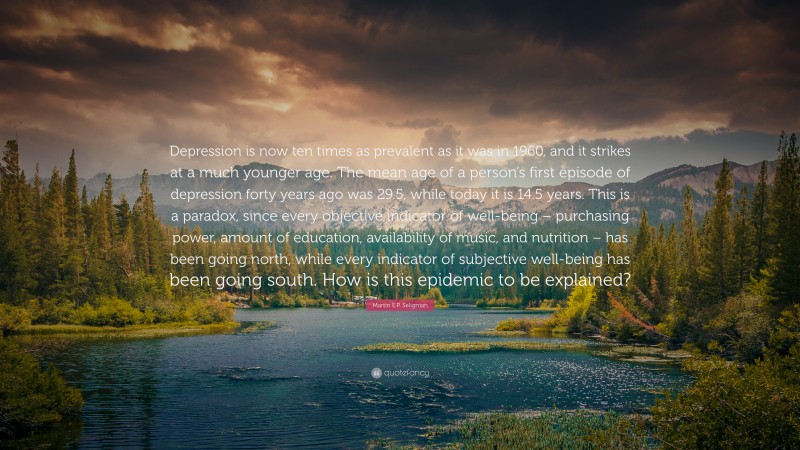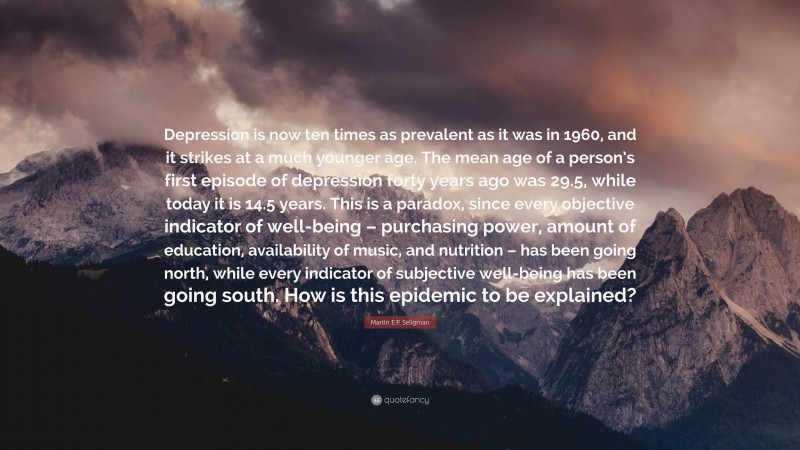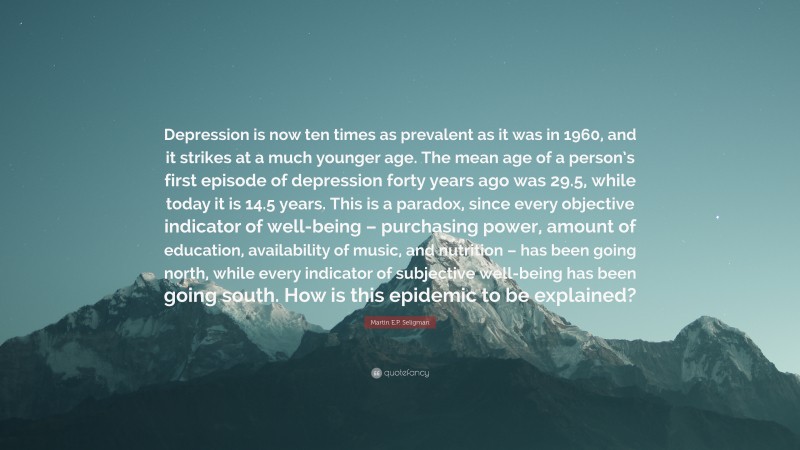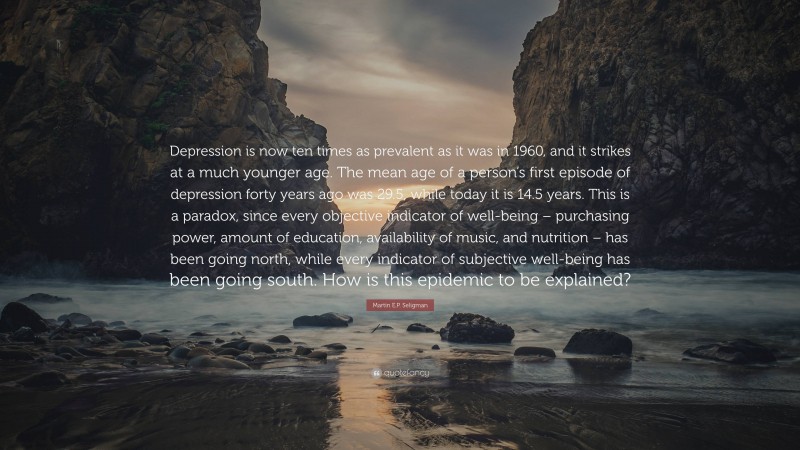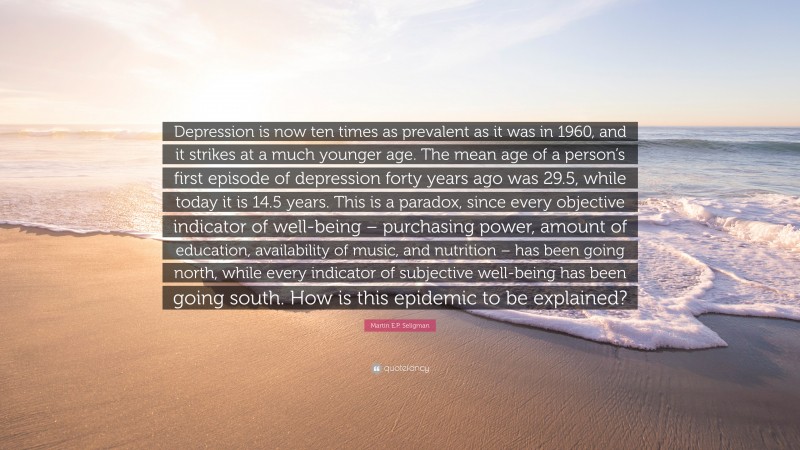
“Depression is now ten times as prevalent as it was in 1960, and it strikes at a much younger age. The mean age of a person’s first episode of depression forty years ago was 29.5, while today it is 14.5 years. This is a paradox, since every objective indicator of well-being – purchasing power, amount of education, availability of music, and nutrition – has been going north, while every indicator of subjective well-being has been going south. How is this epidemic to be explained?”
